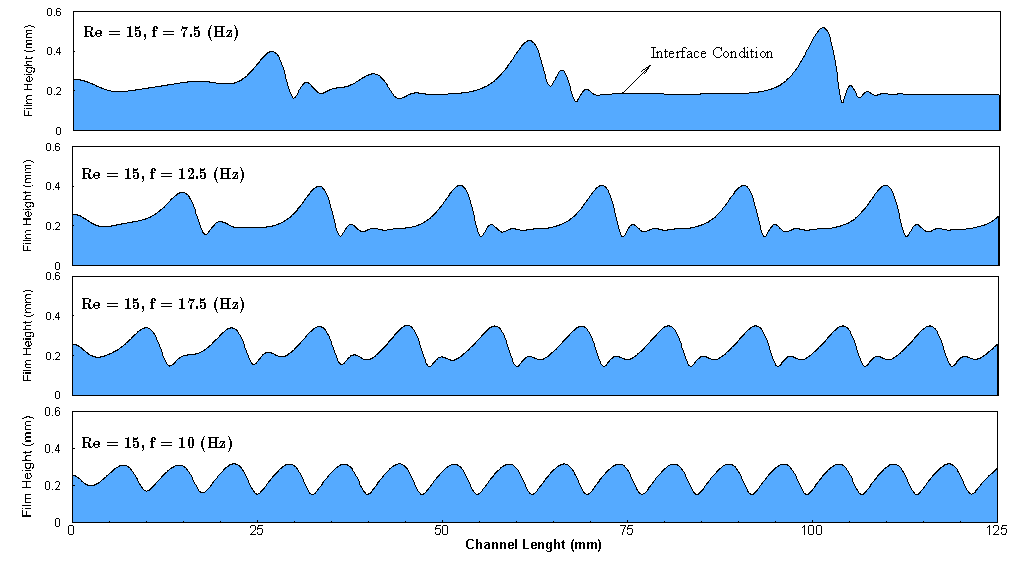Interfacial Instabilities - آزمایشگاه شبیهسازی دینامیک شارهها و علوم گرمایی cfdtherms
Interfacial Instability
In separated flows, two fluid phases are connected by a contact surface on the molecular scale that is named the interface. This phenomenon in certain conditions of angle and surface length, flow rate, gravitational force, and other factors, can be associated with double complexity and form waves on this interface. Two-phase flows can be divided into two general categories based on the flow regime, the laminar and the turbulent flows with a smooth wave and turbulent contact surface.
In the first category, both gas and liquid phases are assumed to be non-wavy and the interface of the two fluids maintains its stability but the laminar flows of the perturbations, which often originate from the input of the stream, grow due to the instability mechanisms downstream and come out of the flat shape and produce waves.

When the instability exceeds a limit, a turbulent current will be generated where the interface is broken and two phases (two fluids) enter each other. Wave interface can somehow increase the contact surface of two phases and disturb the boundary layer on both sides of the contact surface. On the other hand, from a computational point of view and experimental studies, because wave structures due to velocity changes between two phases strongly affect the complex behaviour of the fluid and the interface surface, it is considered as a permanent challenge of this type of Two-phase flows.
